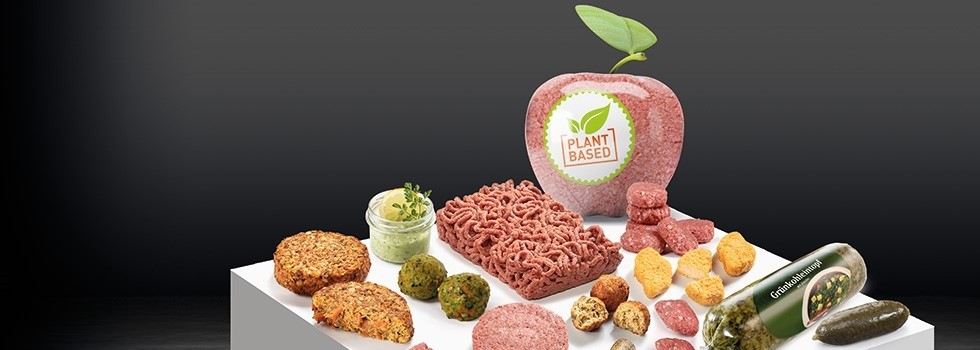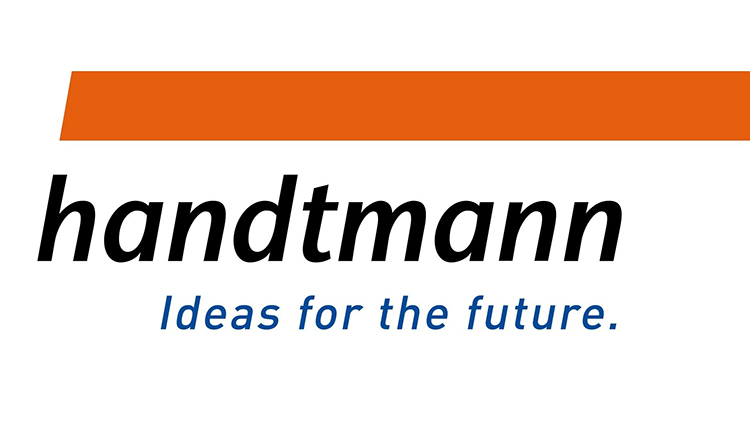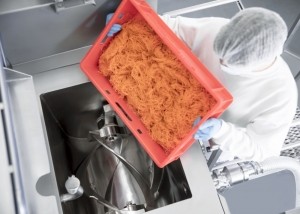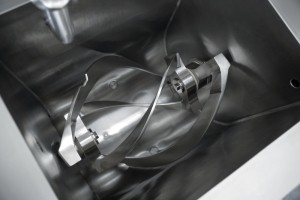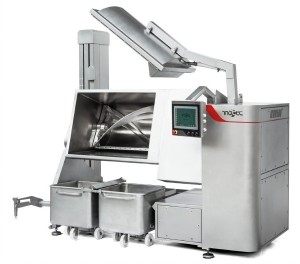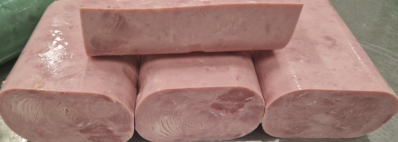Promotional Features
All in the mix: the challenge of meat-free manufacture
While all the signs point to the meat-free trend continuing to gain traction, the challenges of manufacturing well-textured, tasty end-products remain. But one solution could lie in how ingredients are blended together, as Handtmann explains.
‘Brits pledge in their millions to go meat-free in 2022’: that news headline from a Food Manufacture report in January points clearly to the momentum that the meat-free trend has gained in the UK. Based on research by finder.com, it reveals that 7.2m adults in the UK or around 14% of the population are now following a meat-free diet, while a further 8.8m plan to go meat-free this year1. This, says the study, means that by the beginning of 2023, the UK could have a total of 16 million meat-free citizens.
While the study also finds that the number of people adopting a meat-free diet did fall last year1, the long-term trajectory for the meat substitutes category is still positive; estimated sales figures from Global Data value it at US$713m in UK retail in 2021 and project a rise to $1.01bn by 20262, making it “a trend with legs”. And that trend is clearly evidenced by the number of meat-free products now available in supermarket aisles.
The arguments for going meat-free have been well documented, with personal health and environmental concerns cited as key drivers. In particular, the younger generation, seems keen to embrace a meat-free or flexitarian diet, with 30% of Gen Z planning to go meat-free this year, according to finder.com’s research.
However, to date, most plant-based products are designed to imitate their meat counterparts, mimicking the texture, smell and appearance of regular burgers, sausages, nuggets and seafood. As a report last year3 noted: “Appearance, texture and flavour are the three main challenges food scientists face when developing a convincing plant-based meat. These are what give meat its characteristics and essence.”
Yet achieving this with a vast array of alternative ingredients is no simple task and the principal challenge faced by manufacturers is overcoming negative taste and texture perceptions, particularly for those keen to follow a flexitarian diet.
“Most of the processes in meat -free manufacturing are the same as in meat-based,” says Richard Lees, Inotec UK sales and product manager at Handtmann. “They are all a multi-stage process. Generally, they would start with an emulsion, initially made up in a blender or chopper before going into a mixer. Following that, the protein source, flavouring and colourings are added and that’s where the main mixing starts.”
Indeed, mixing is one of the most dynamic steps in the manufacturing process of plant-based meat alternatives, according to a study by Food Research Lab4. “Plant-based meat substitutes (PBMAs) are often processed, transferred and packaged in a continuous process. This is a struggle for products that are sticky and do not flow easily,” it says. “The base mix of a PBMA often contains over 30 different ingredients with different physical and functional properties that vary in moisture content, particle size, rheology and stability5.”
Not only is this process complex, but it is time-consuming, labour-intensive and, therefore, costly. So, for meat-free manufacturers – particularly in the current inflationary market – narrowing down that time and labour is a goal to which most would aspire.
Finding a solution
Following its acquisition of equipment manufacturer Inotec a couple of years ago, Handtmann maintains that its Inotec Variomix might just offer the best solution.
The mixer’s patented technology comprises two spirals that interweave, creating an intense but gentle mix that enables meat-free manufacturers to reduce the processes in producing an emulsion and resulting in a blend with better taste and texture.
“At full speed, it works almost like a blender, but when we slow it down, it has a massaging effect,” says Lees. “The two spirals are independently adjustable in speed and direction of rotation. It’s very versatile.
“Because the Variomix can work so quickly, we can achieve a homogenised product in a single process.”
As Paul Morican, sales team manager at Handtmann, points out, there are multiple ways of mincing, blending, chopping and bowl chopping to obtain the required end-result but the Variomix potentially eliminates two or three of these processes to arrive at the same – or an even better – result. “That individual piece of kit is a lot cheaper to run than a bowl chopper that is sucking up all the energy from a factory, for example, or a mixer grinder that requires plate sharpening all the time. or even replacement. So it’s a single process to get producer to where they want to be with their product.”
As an example, Lees points to one particular meat-free product where the Variomix enabled the company to reduce the mixing time down from over 50 minutes per batch to less than 15 minutes.
“If you do a coloured product, for example, you can see the colour incorporate and blend into the mix easily, whereas if you were using a standard mixer, you would still get clumps of colour that haven’t been combined so quickly,” he says. “It’s revolutionary and very quick.”
Ranging in size from 350 litres up to a 4,000-litre capacity, the Variomix is suitable for manufacturers of all sizes, says Lees. With two versions – a standard upright model that discharges to one side or the other depending on preference and a flexible tilting option, the IKVM500VAC – the machine is a “game-changer” in the mixing process, he adds. “The mixers are designed so that they can discharge quickly and easily into tote bins, emulsifiers or hoppers, taking the product on to the next stage. It’s designed with that in mind. We do paddle mixers and screw mixers, as do other manufacturers, but for every application that we look at, the Variomix is going to do it better, faster and more thoroughly.”
Due its intense but gentle action, the company is seeing interest from deli, sandwich fillings, soup and sauces manufacturers, he notes. “Not only do we mix, but we can also cook with steam in these vessels, we can chill and it can have a double jacket to temper products.”
At its test kitchen in Leighton Buzzard, the company can offer customers a “top to bottom” product testing solution, says Morican. “The service we can extend to customers is not just the mixer; we’ve got the ability to prove product beyond that into a meat-free sausage or burger, for example. And tasting panels on products where we’ve used the Variomix suggest that the end-result is a better taste and texture.”
The Variomix is already in use at one major UK meat-free manufacturer and Handtmann has high hopes for its adoption across the industry in the next couple of years. “Thanks to our learnings with the impact of this machine, we’re just getting to grips with the radical value proposition it offers,” says Morican. “Through the work that we’re doing and the machines we already have out there as a reference, my hope is that it becomes the benchmark in meat-free production environments as the fastest, most efficient and economical solution for creating a homogenous meat-free product.”
To find out more about the Inotec Variomix, contact Handtmann here. To see the Variomix in action, click on the video below
Sources
1 https://www.finder.com/uk/uk-diet-trends
2 https://www.just-food.com/analysis/a-paradigm-shift-meat-free-moves-beyond-fad-to-uk-trend-with-legs/
3 https://theconversation.com/how-scientists-make-plant-based-foods-taste-and-look-more-like-meat-156839
4 https://www.foodresearchlab.com/blog/new-food-product-development/meatless-meat-critical-challenges-of-plant-based-meat-alternatives-in-new-food-product-development/
5 See 4, plus Grabowska, K. J., Zhu, S., Dekkers, B. L., de Ruijter, N. C., Gieteling, J., & van der Goot, A. J. (2016). Shear-induced structuring as a tool to make anisotropic materials using soy protein concentrate. Journal of Food Engineering, 188, 77-86.
